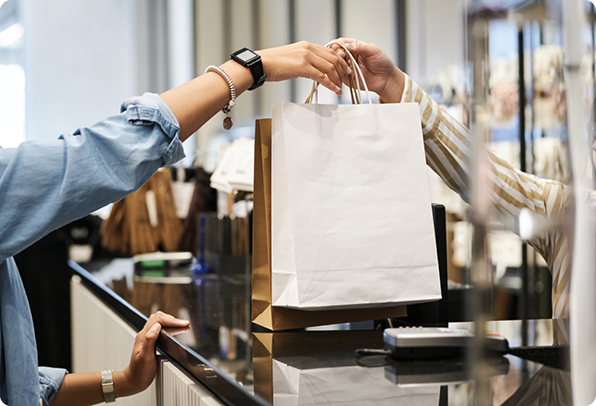The Point of Sale (POS) system has dramatically transformed over the years, especially in the fashion retail sector. Initially serving as a simple tool to track sales, it has now evolved into a robust system that helps retailers manage various aspects of their operations, including inventory, customer relationships, and sales data. This shift has significantly improved the efficiency and effectiveness of fashion retailers, allowing them to meet the increasing demands of consumers.
Early POS Systems: Limited Functionality
In its earliest form, the POS system was little more than a cash register, allowing retailers to log transactions and provide receipts. It lacked the ability to assist with stock management or provide insights into customer behaviour. Everything from tracking sales to managing inventory was done manually, which was inefficient and prone to human error. For fashion retailers dealing with multiple sizes, colours, and styles, this was particularly challenging.
The Shift to Digital POS
In the 1990s, digital POS systems emerged, bringing significant changes to retail operations. No longer just a tool for recording sales, these systems could now track stock levels, analyse sales data, and offer insights into customer preferences. For fashion retailers, who need to manage fast-moving trends and seasonal stock, digital POS systems offered a much-needed improvement in accuracy and efficiency.
These systems allowed retailers to see which products were selling and which were underperforming. This real-time data helped businesses make more informed decisions about reordering stock and adjusting product displays. The ability to track sales data also provided insights into customer preferences, allowing retailers to better understand their audience and adjust their offerings accordingly.
Integrated Inventory Management
One of the biggest advantages of modern POS systems is their integration with inventory management. This is particularly valuable for fashion retailers, where managing stock levels can be a major challenge. With an integrated POS system, retailers can track stock levels in real time, ensuring that they always know what’s available and when it’s time to reorder.
This integration helps fashion retailers avoid overstocking and understocking, both of which can hurt profitability. By tracking sales and stock levels simultaneously, retailers can make more accurate decisions about what products to keep in stock, ensuring they have the right inventory available to meet customer demand.
Additionally, retailers with multiple stores or an online presence benefit from a POS system that can synchronise inventory across all locations, providing a clear picture of what is available, regardless of where the customer is shopping.
Enhancing the Customer Experience
Customer experience is a key element of success in fashion retail, and modern POS systems play a significant role in delivering a seamless and personalised shopping experience. Advanced systems allow retailers to track customer purchases, preferences, and loyalty points, enabling them to personalise recommendations and promotions.
By offering suggestions based on past purchases or customer preferences, retailers can improve engagement and encourage repeat business. For example, a customer who frequently buys from a specific brand or style can be informed about new arrivals or promotions that match their taste. This personalisation makes customers feel valued and improves their overall experience.
Mobile POS and Flexibility
The rise of mobile POS (mPOS) systems has introduced greater flexibility for fashion retailers. These systems allow sales associates to complete transactions anywhere in the store, reducing wait times and improving customer interaction. This is especially useful in fashion retail, where customers often need assistance with sizing, styles, or recommendations.
With mPOS systems, associates can check stock availability, provide advice, and complete sales without needing to return to a central cash register. This enhances the customer experience and streamlines the sales process.
Additionally, mPOS systems allow retailers to expand their reach by selling at pop-up shops, events, or markets, providing greater flexibility in where and how they do business.
Data-Driven Insights
Modern POS systems provide retailers with valuable data that can help inform business decisions. By tracking sales performance, customer preferences, and product trends, retailers gain insights into which items are performing well and which may need to be discounted or reordered.
These systems allow fashion retailers to optimise their product offerings, ensuring they are stocking the items that customers want while avoiding overstocking less popular items. The ability to analyse sales trends in real time helps retailers respond quickly to changes in demand, ensuring they stay competitive in the fast-paced world of fashion retail.
The Future of POS Systems in Fashion Retail
As technology continues to evolve, POS systems will likely play an even bigger role in fashion retail. With advancements like artificial intelligence and machine learning, retailers will have access to even more detailed customer insights and predictive analytics, helping them anticipate trends and optimise stock levels.
Additionally, as sustainability becomes more important to consumers, POS systems may evolve to track the environmental impact of products, providing transparency and helping retailers meet customer demands for more ethical and sustainable fashion.




